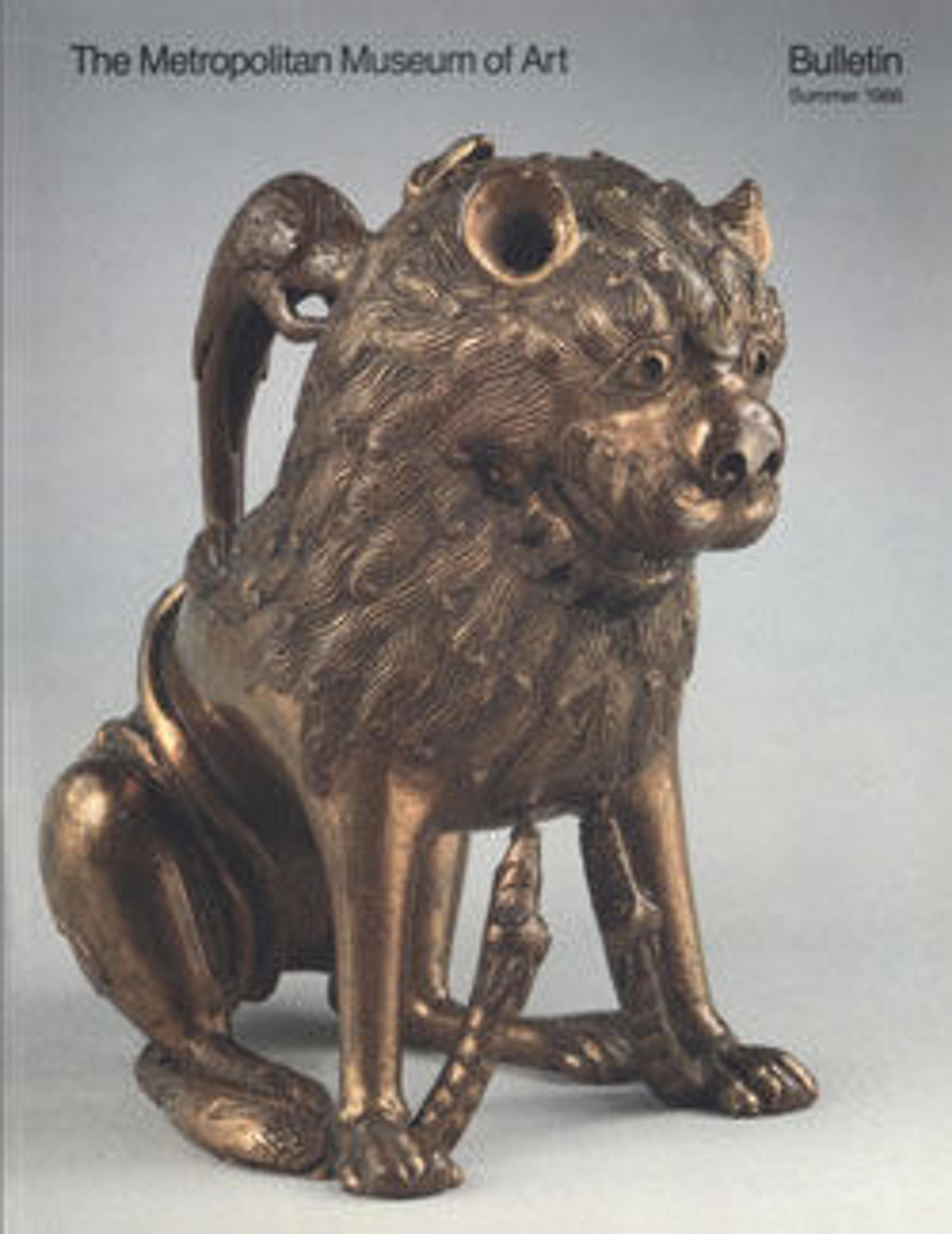Pricket Candlestick with a Naked Youth Fighting a Dragon
The dragon speared by a naked youth is a fanciful subject typical of the imaginative creatures found in the work of medieval goldsmiths and in manuscript illumination.
Artwork Details
- Title: Pricket Candlestick with a Naked Youth Fighting a Dragon
- Date: ca. 1140–60
- Geography: Made in Meuse Valley, Netherlands
- Culture: South Netherlandish
- Medium: Gilded copper alloy
- Dimensions: Overall: 7 5/8 x 6 x 4in. (19.4 x 15.2 x 10.2cm)
- Classification: Metalwork-Copper alloy
- Credit Line: Gift of George Blumenthal, 1941
- Object Number: 41.100.131
- Curatorial Department: Medieval Art and The Cloisters
More Artwork
Research Resources
The Met provides unparalleled resources for research and welcomes an international community of students and scholars. The Met's Open Access API is where creators and researchers can connect to the The Met collection. Open Access data and public domain images are available for unrestricted commercial and noncommercial use without permission or fee.
To request images under copyright and other restrictions, please use this Image Request form.
Feedback
We continue to research and examine historical and cultural context for objects in The Met collection. If you have comments or questions about this object record, please complete and submit this form. The Museum looks forward to receiving your comments.
